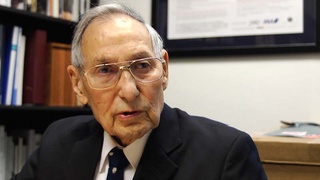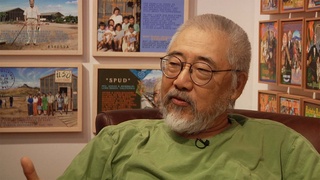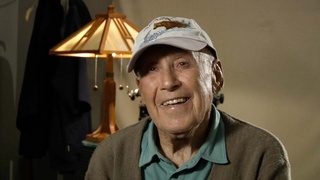Interviews
Dealing with racism within army unit in Korea
There were remarks said to me, and, being an Asian sent to a place like Korea, there was constant, there was a constant sort of reference to, hey, you look like the enemy. And the enemy was called Joe Chink. That's what they called the North Koreans. And frequently they would call me, hey, Joe Chink.
And another thing was like they called me Pop-up, because I looked like the targets that we all shot at. Whenever we did target practice -- 'cause we had to constantly shoot weapons to qualify -- all these pop-ups had slanted eyes and buck teeth. They were from World War II, Japanese stereotype depictions. And I remember the first time I went out there and qualified with a .45, and you can't see these targets, then all of a sudden wham, this figure came up like this and here's this Jap. And you [makes shooting sound] shoot holes in it, boom, another one, another one, another one, five of them come up and they're all Japs. So, that was my nickname, Pop-up.
Date: March 18 & 20, 2003
Location: Washington, US
Interviewer: Alice Ito and Mayumi Tsutakawa
Contributed by: Denshō: The Japanese American Legacy Project.
Explore More Videos

Moving to Upland Post-Camp
(b. 1930) Half Japanese and grew up in both Japan and the United States.

Discrimination in Air Corps
(1918-2022) Hapa World War II veteran, pilot


Coming to California
(1916 - 2013) Member of the U.S. Military Intelligence Service

Learning Japanese with the MIS
(1916 - 2013) Member of the U.S. Military Intelligence Service

Miscommunications
(1916 - 2013) Member of the U.S. Military Intelligence Service

Writing Letters
(1916 - 2013) Member of the U.S. Military Intelligence Service

“I could never get a job offer from a private law firm”
(b. 1934) The First Japanese American Appointed to the U.S. Court of Appeals.


Resettling in Chatham
(1941-2018) Japanese Canadian photojournalist and activist

Playing basketball in the army
(b. 1938) Japanese Peruvian incarcerated in Crystal City

Joining the army
(1919 - 2015) Nisei who served in World War II with the 442nd Regimental Combat Team

Working as a typist in the army
(b. 1938) Japanese Peruvian incarcerated in Crystal City

Animosity between the Hawaiians and the mainlanders
(1919 - 2015) Nisei who served in World War II with the 442nd Regimental Combat Team

Being scared during combat
(1919 - 2015) Nisei who served in World War II with the 442nd Regimental Combat Team
